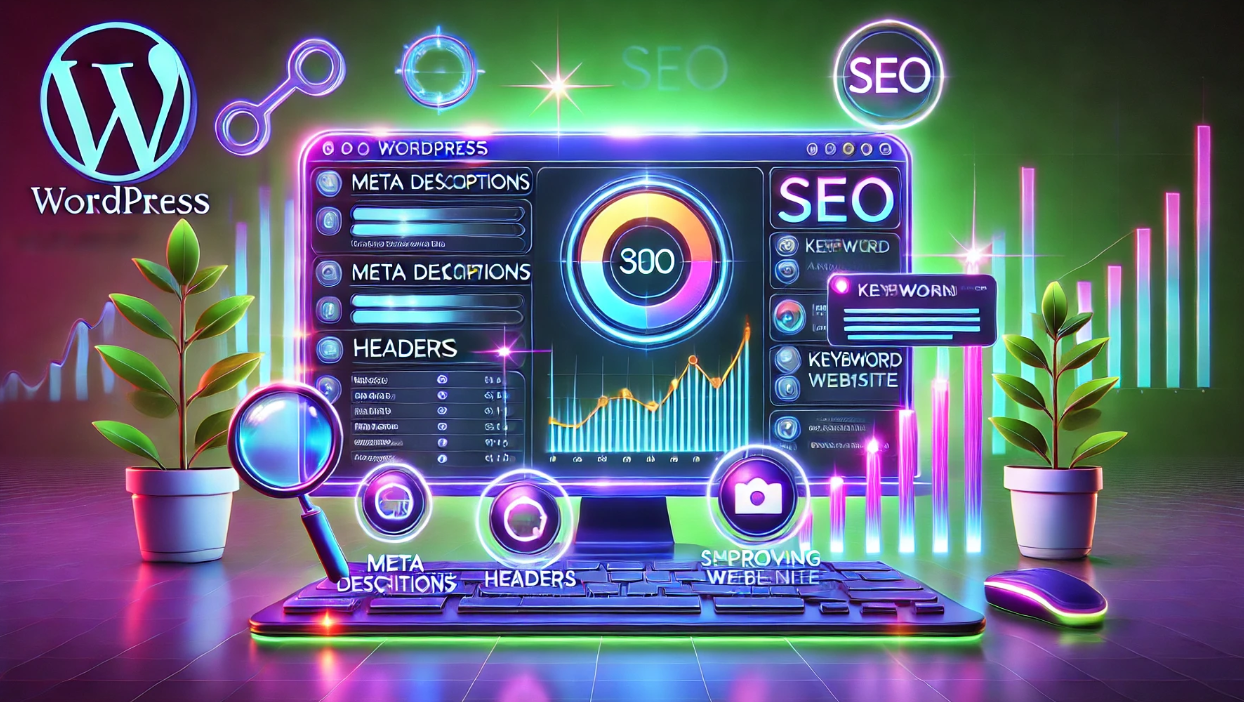10 Actionable On-Page SEO Tips for WordPress Sites to Rank Higher on Google
Getting your WordPress site to rank higher on Google requires more than just great content. On-page SEO ensures that your website is optimized for both search engines and users, making it easier to climb the search rankings.
In this guide, we’ll explore 10 actionable on-page SEO tips that you can implement on your WordPress site to improve your rankings, boost traffic, and create a better user experience.
1. Use Optimized Headers (H1, H2, H3)
Headers (H1, H2, H3, etc.) structure your content, making it easier for search engines and users to understand.
Tips for Optimized Headers:
- H1 Tag: Each page should have one H1, usually the title of the post or page.
- Subheadings (H2, H3): Use these to break up your content into sections. Include target keywords naturally in these headers.
- Readability: Keep headers short, descriptive, and easy to read.
Example: Instead of “Tips,” use “5 Proven Tips to Boost Your Website’s SEO.”
2. Write Compelling Meta Titles and Descriptions
Your meta title and description are what users see in Google’s search results, so they play a huge role in attracting clicks.
Tips for Meta Optimization:
- Include Keywords: Place your primary keyword at the beginning of the meta title.
- Keep It Concise: Limit meta titles to 50-60 characters and meta descriptions to 150-160 characters.
- Add a Call-to-Action (CTA): Encourage users to click with phrases like “Learn More” or “Get Started.”
Tools: Use plugins like Yoast SEO or Rank Math to customize and optimize your meta tags directly in WordPress.
3. Optimize Your URLs
Clean, keyword-rich URLs are not only better for SEO but also improve click-through rates.
Tips for URL Optimization:
- Keep It Short: Use concise URLs with 3-5 words.
- Include Keywords: Add your target keyword to the URL.
- Avoid Stop Words: Remove unnecessary words like “and,” “the,” or “of.”
Example:
Instead of /how-to-boost-your-seo-with-on-page-optimization/, use /boost-seo-on-page-tips/.
4. Compress and Optimize Images
Large, unoptimized images can slow down your website, which affects both user experience and SEO rankings.
Tips for Image Optimization:
- Compress Images: Use tools like Smush or ShortPixel to reduce file sizes without compromising quality.
- Add Alt Text: Describe the image and include relevant keywords for better accessibility and SEO.
- Choose the Right Format: Use JPEG for photos and PNG for graphics with transparency.
Pro Tip: Enable lazy loading for images using plugins like WP Rocket to improve page speed.
5. Leverage Internal Linking
Internal links help search engines crawl your site and establish a hierarchy for your content. They also keep users engaged by pointing them to related pages.
Tips for Internal Linking:
- Link to Relevant Pages: Add links to related posts or pages that enhance the user experience.
- Use Descriptive Anchor Text: Include keywords in the anchor text for better context.
- Avoid Overlinking: Use 2-4 internal links per post, depending on its length.
Example: Linking “Learn how to optimize your website’s speed” to a related blog post about improving site performance.
6. Focus on Mobile Optimization
With Google’s mobile-first indexing, a mobile-friendly site is critical for rankings.
Tips for Mobile Optimization:
- Choose a Responsive Theme: Most WordPress themes, like Astra and GeneratePress, are mobile-friendly by default.
- Test Mobile Usability: Use Google’s Mobile-Friendly Test to check how your site performs.
- Improve Load Speed: Minimize mobile load times with tools like AMP for WordPress or by optimizing your site’s code.
7. Improve Page Load Speed
Page speed is a ranking factor, and slow-loading websites frustrate users.
Tips for Faster Load Times:
- Enable Caching: Use plugins like WP Rocket or W3 Total Cache to cache pages and reduce server load.
- Optimize Hosting: Choose a reliable hosting provider like SiteGround or Kinsta.
- Minify CSS, JavaScript, and HTML: Minimize code with plugins like Autoptimize.
- Use a CDN: Services like Cloudflare distribute content across multiple servers for faster delivery.
8. Use Schema Markup
Schema markup adds structured data to your website, helping search engines understand your content better and enhancing search result visibility.
Tips for Using Schema:
- Install a Plugin: Use plugins like Schema Pro or Yoast SEO to add structured data without coding.
- Focus on Key Pages: Add schema to pages like blogs (Article schema), product pages (Product schema), or local business pages (LocalBusiness schema).
- Test Your Markup: Use Google’s Rich Results Test to ensure your schema is implemented correctly.
9. Create Quality, Keyword-Rich Content
Content is king, but quality content optimized with keywords is what gets you noticed by search engines.
Tips for Content Optimization:
- Do Keyword Research: Use tools like Google Keyword Planner or Ahrefs to find relevant keywords.
- Place Keywords Naturally: Include your target keyword in the first 100 words, headers, and throughout the content.
- Write for Humans First: Ensure your content is engaging and easy to read.
Pro Tip: Add LSI (Latent Semantic Indexing) keywords to help search engines understand your content’s context.
10. Install an SEO Plugin
An SEO plugin simplifies optimizing your WordPress site and ensures you’re following best practices.
Top SEO Plugins:
- Yoast SEO: Offers on-page optimization suggestions, readability analysis, and XML sitemap generation.
- Rank Math: A free, feature-rich plugin with Google Search Console integration and keyword analysis.
- All in One SEO (AIOSEO): Perfect for beginners with easy-to-use SEO tools and social media integration.
These plugins guide you through optimizing each page and post, ensuring nothing is overlooked.

